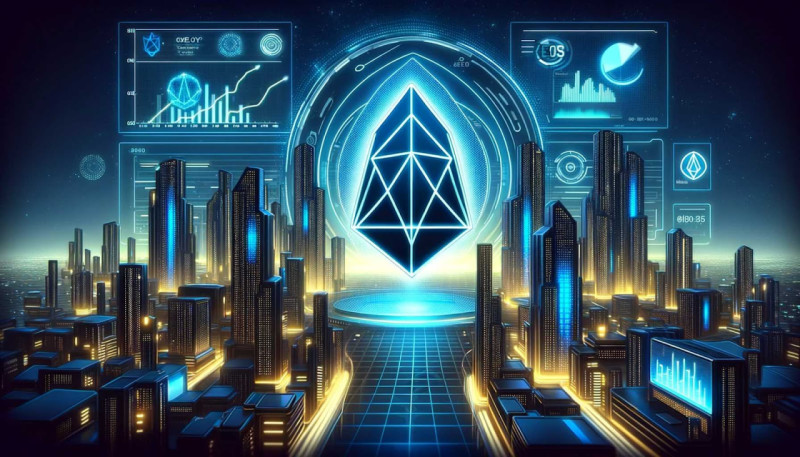
Introduction
Cryptocurrencies have revolutionized the way we think about financial transactions and digital ownership. At its core, a cryptocurrency is a type of digital or virtual currency that uses cryptography for security, making it extremely difficult to counterfeit. Unlike traditional currencies, cryptocurrencies operate on a decentralized network using technology known as blockchain. A blockchain is a distributed ledger that records all transactions across a network of computers, ensuring transparency and security without the need for a centralized authority. Within the broad spectrum of cryptocurrencies, those categorized under the utility cryptocurrency list are particularly notable for their functional purposes beyond just being a medium of exchange.
Among the plethora of cryptocurrencies available today, EOS stands out with its unique approach and architecture. Designed specifically to support decentralized applications (dApps), EOS aims to address some of the critical challenges faced by other blockchain systems, such as scalability and usability. This article will delve into what EOS is, how it differs from other cryptocurrencies, and why it has garnered attention in the crypto world.
Introduce EOS as a specific type of cryptocurrency
EOS is a distinctive player in the cryptocurrency landscape, designed with a focus on scalability and efficiency to support decentralized applications (dApps). Launched in June 2018 after one of the most successful initial coin offerings (ICO) in history, EOS was developed by Block.one, a company led by Daniel Larimer and Brendan Blumer. Unlike many other blockchain platforms that struggle with network congestion and high transaction fees as they scale, EOS introduces a novel governance model and an underlying architecture designed to process significant numbers of transactions quickly and without transaction fees.
The foundation of EOS's functionality is its use of the Delegated Proof of Stake (DPoS) consensus mechanism, which is more energy-efficient and faster than the traditional Proof of Work system used by cryptocurrencies like Bitcoin. This mechanism not only speeds up transaction processing but also enhances scalability—a critical requirement for the development and smooth functioning of complex dApps. EOS also differs from other blockchain networks in its user-friendly approach, offering tools that simplify the interface for both users and developers, which makes it a strong candidate for mainstream adoption of blockchain technology.
With these features, EOS positions itself not just as a cryptocurrency but as a complete blockchain platform for the new generation of commercial-scale dApps, aiming to become the backbone of decentralized application deployment.
Purpose of the article
The purpose of this article is to provide a comprehensive overview of EOS, highlighting its distinct features, technological framework, and its potential impact on the broader cryptocurrency landscape. We will explore how EOS aims to revolutionize the development and deployment of decentralized applications through its unique architecture and governance model. Additionally, we will discuss EOS's comparative advantages and challenges, examining how it stands apart from other major cryptocurrencies in terms of scalability, user-friendliness, and transaction efficiency. By delving into these aspects, the article seeks to equip readers with a deeper understanding of EOS and its possible future role in reshaping the digital and decentralized world.
What Is EOS Crypto?
EOS is a blockchain-based platform designed for the development and hosting of commercial-scale decentralized applications (dApps). Unlike traditional blockchains, which primarily serve as ledgers for recording transactions, EOS focuses on providing a comprehensive operating system-like construct with robust computational resources and user-friendly interfaces. This makes it particularly suitable for developers looking to create dApps that require a reliable infrastructure capable of handling a high volume of transactions and large-scale user bases.
The EOS blockchain employs a unique architecture that separates it from other blockchain technologies. It operates on a Delegated Proof of Stake (DPoS) consensus mechanism, which is different from the more commonly known Proof of Work (PoW) and Proof of Stake (PoS) mechanisms. In DPoS, token holders vote for a select group of delegates, who are responsible for validating transactions and maintaining the blockchain’s integrity. This system not only enhances transaction speeds but also significantly increases scalability, enabling the EOS network to process thousands of transactions per second.
Another defining feature of EOS is its focus on eliminating transaction fees by having the network's costs covered by inflation; the developers stake EOS tokens to deploy and run applications instead of paying per transaction. This setup can be particularly appealing for businesses looking to adopt blockchain technology as it removes the transaction cost barrier.
By integrating these features, EOS aims to become a leading platform for decentralized applications, providing the necessary tools and environment for developers to innovate without the limitations found in older blockchain systems. This approach positions EOS at the forefront of the next wave of blockchain innovation, aimed at mainstream adoption and large-scale implementation.
What Is EOS Crypto: Origins
EOS was created by Block.one, a company specializing in high-performance blockchain technologies. Block.one was co-founded by Daniel Larimer and Brendan Blumer. Daniel Larimer is known in the cryptocurrency space for his role in founding other influential decentralized platforms, including BitShares and Steem. His expertise in creating decentralized systems and his innovative approach to blockchain technology significantly shaped the development of EOS.
The initial coin offering (ICO) of EOS was one of the largest and most prolonged in cryptocurrency history. It started in June 2017 and lasted for a full year until June 2018. This ICO was notable not only for its duration but also for the substantial funds it raised, amounting to over $4 billion. This record-breaking fundraising effort highlighted the market's strong interest and confidence in EOS's proposed advancements in blockchain technology.
EOS officially launched its mainnet on June 10, 2018. The launch was highly anticipated due to the significant support and backing from the blockchain community and was marked by extensive scrutiny and attention from both supporters and critics. The mainnet launch represented a major milestone for EOS, transitioning from a theoretical concept into a functioning blockchain platform capable of supporting large-scale decentralized applications. This step was critical in starting to realize the ambitious goals set by its creators.
What Is EOS Crypto: Primary goal
The primary goal of EOS is to facilitate the development and operation of scalable decentralized applications (dApps). This objective is rooted in addressing the common limitations faced by earlier blockchain platforms, such as slow transaction speeds, lack of scalability, and cumbersome user interfaces, which have hindered widespread blockchain adoption, especially in commercial settings.
EOS aims to redefine the blockchain landscape by providing a more scalable, flexible, and user-friendly platform. To achieve this, EOS uses an innovative Delegated Proof of Stake (DPoS) mechanism which significantly increases its capacity to handle large volumes of transactions swiftly. This capability is crucial for dApps that require real-time interaction and high transaction throughput, such as social media platforms, online gaming, and decentralized finance applications.
Furthermore, EOS emphasizes "usability" for both developers and end-users. For developers, EOS provides advanced tools and a supportive environment including a web toolkit for interface development, self-describing interfaces, self-describing database schemas, and declarative permission schemes. These features simplify the development process, making it more accessible to create powerful and efficient applications.
For users, EOS strives to offer a frictionless experience, eliminating the need for transaction fees through an ownership model where users stake EOS tokens to access resources rather than pay per transaction. This model not only facilitates greater user engagement without worrying about transaction costs but also encourages more robust and continuous usage of dApps.
In essence, EOS's primary goal is to become the standard platform for dApps, capable of supporting large-scale applications across various industries. By solving the scalability and usability issues, EOS aims to propel the mainstream adoption of blockchain technology, ensuring that decentralized applications can meet and exceed the performance of their traditional centralized counterparts.

Technical Overview of What Is EOS Crypto
Delegated Proof of Stake (DPoS) Consensus Mechanism
EOS employs the Delegated Proof of Stake (DPoS) consensus mechanism, designed to provide a more efficient and scalable alternative to the traditional Proof of Work (PoW) system used by many cryptocurrencies like Bitcoin. DPoS is central to EOS's ability to support scalable decentralized applications efficiently.
How DPoS Works
Voting System In DPoS, token holders participate in the consensus process through a voting mechanism rather than mining. Each token holder can vote for a number of delegates, also known as block producers in EOS. The weight of their votes is proportional to the amount of tokens they hold.
Selection of Block Producers The EOS network periodically tallies votes to elect a group of top candidates as block producers. A fixed number of block producers (for example, 21 in EOS) ensures a manageable group that can coordinate efficiently. These producers are responsible for validating transactions and creating new blocks.
Block Creation Unlike PoW, where miners compete to solve complex problems, in DPoS, elected block producers sequentially create blocks in a round-robin fashion. This streamlined process reduces the computational power and time needed to secure the network and confirm transactions.
Incentives and Accountability Block producers are rewarded with new tokens for producing blocks, incentivizing them to perform efficiently. If they fail to meet the network's standards or act maliciously, they can be voted out by token holders, ensuring a self-regulating governance model.
Advantages of DPoS
- Scalability DPoS enables rapid consensus and block creation, allowing EOS to process more transactions per second than PoW and traditional PoS systems.
- Energy Efficiency By eliminating the need for intensive computational work, DPoS is significantly more energy-efficient than PoW.
- Reduced Centralization Risks Although DPoS systems can face criticisms related to centralization due to the limited number of block producers, the inherent voting system allows token holders to replace underperforming or untrustworthy producers, fostering a competitive and democratic environment.
In essence, the DPoS mechanism is fundamental to the EOS platform, providing the necessary infrastructure to deliver a scalable, efficient, and user-friendly environment for developing and deploying decentralized applications. This approach aligns closely with EOS's vision of making blockchain technology more accessible and practical for a broad range of applications.
What Is EOS Crypto: The role of Block Producers
Block Producers play a critical role in the EOS network, serving as the backbone of its operational structure and governance. They are responsible for maintaining the integrity, performance, and reliability of the EOS blockchain. Here’s a breakdown of their key functions and responsibilities:
1. Block Production
Block Producers are tasked with generating new blocks on the EOS blockchain. They create these blocks at regular intervals — every 0.5 seconds in EOS’s case — which are then added to the blockchain. This activity involves collecting and verifying transactions, packaging them into blocks, and broadcasting these blocks to the network.
2. Transaction Validation
Beyond mere block creation, Block Producers validate transactions. They ensure that each transaction adheres to the network's rules, is not fraudulent, and does not result in double spending. This validation process is crucial for maintaining the security and robustness of the EOS network.
3. Network Governance
Block Producers also play a significant role in governance. They vote on various network changes, such as upgrades and protocol adjustments. This governance structure allows the EOS network to adapt and evolve based on collective decision-making, where Block Producers represent the interests of EOS token holders who vote for them.
4. Consensus Achievement
In EOS’s DPoS system, consensus on the state of the ledger is achieved not through competition, as in Bitcoin’s Proof of Work, but through cooperation among the elected Block Producers. This method is integral to maintaining the network's agreed-upon data and ledger history.
5. Resource Allocation
They manage the allocation of network resources such as bandwidth, computational power, and storage. Block Producers assess and allocate these resources to various applications and users on the network, based on the staked resources by users.
6. Community Engagement and Development
Block Producers are often involved in community engagement and development efforts. They educate and support users and developers, sponsor community events, and provide technical support. Their involvement is vital for fostering a vibrant and active EOS ecosystem.
The election of Block Producers is a continuous process, reflecting the democratic ethos of the EOS network. EOS token holders vote for their preferred candidates, and the weight of each vote is proportional to the number of tokens held. This system incentivizes Block Producers to act in the best interests of the community, as failing to perform their duties effectively or acting against the network’s interest can lead to them being voted out.
Through these diverse roles, Block Producers ensure that the EOS blockchain remains efficient, secure, and aligned with the community's needs, making them pivotal to the network's overall health and success.
What Is EOS Crypto: Software architecture
EOS's software architecture is designed to optimize performance, scalability, and flexibility, making it well-suited for hosting commercial-scale decentralized applications. Below are the key components and unique features of the EOS software architecture:
1. Modular Structure
EOS operates on a highly modular framework, allowing separate components of the system to interact without dependencies. This modularity supports flexibility in updates and maintenance, enabling developers to customize or upgrade specific parts of the system without disrupting the entire network.
2. Multi-threaded Capability
One of EOS's standout features is its support for multi-threading. This allows the EOS blockchain to execute multiple processes in parallel, significantly enhancing transaction processing speeds and overall throughput. Multi-threading is crucial for scalability as it supports more extensive and more complex dApp ecosystems.
3. Asynchronous Communication
The EOS architecture permits asynchronous communication and transaction processing. This means that operations do not need to wait for others to complete before they start, which can dramatically reduce latency and improve the efficiency of the network.
4. Role-based Permission System
EOS introduces a flexible and hierarchical role-based permission system. This system allows for the creation of different permission levels within a single account, providing fine-grained control over who can access and perform operations on the blockchain. It enhances security and administrative capabilities within applications.
5. WebAssembly (WASM)
EOS uses WebAssembly (WASM) for its smart contract execution. WASM is a high-performance instruction format that provides an efficient way to run code on modern web browsers. Using WASM allows EOS to execute smart contracts at near-native speed, which is significantly faster than using traditional virtual machines like the Ethereum Virtual Machine (EVM).
6. Decentralized Operating System-like Environment
EOS is often described as a decentralized operating system due to its comprehensive service and application-support framework. It provides services like user authentication, cloud storage, and server hosting, which are essential for dApp development but are typically managed externally in other blockchain environments.
7. Resource Management
Unlike other blockchains that use transaction fees, EOS operates on an ownership model where users stake EOS tokens to allocate resources for applications instead of paying for every transaction. This model not only makes user costs predictable but also eliminates transaction fees, encouraging more frequent and intensive use of dApps.
8. Upgradable Smart Contracts
Smart contracts on EOS can be set up to be upgradable, allowing developers to fix bugs or make improvements over time without needing to deploy a new contract. This feature is essential for long-term application maintenance and user trust.
9. Built-in Support for DApp Development
EOS provides a comprehensive suite of tools and a robust SDK (Software Development Kit) to support dApp developers, including features like database schemas, user interface components, and standard templates for common operations.
This architecture not only supports EOS's primary goal of hosting scalable dApps but also positions it as a pioneering platform in the blockchain space, geared towards facilitating enterprise-level applications and widespread adoption.

Key Features of What Is Eos Crypto
Higher Transaction Speeds
Scalability is a core strength of EOS, designed explicitly to handle a higher volume of transactions per second (TPS) compared to many existing blockchain platforms. This capability is critical for applications that require real-time feedback and high throughput, such as interactive games or large-scale industrial applications. Here are the technical innovations and features that enable EOS to achieve remarkable scalability and transaction speeds:
1. Delegated Proof of Stake (DPoS)
At the heart of EOS's scalability is its DPoS consensus mechanism. Unlike Proof of Work (PoW) used by networks like Bitcoin, which can be slow and energy-intensive due to mining, DPoS streamlines the process of reaching consensus. In EOS, only a select group of 21 block producers are responsible for validating transactions and creating blocks. This limited number of validators allows the network to process transactions much faster, as the consensus process is not bogged down by a large number of nodes competing to solve cryptographic puzzles.
2. Parallel Processing
EOS architecture supports parallel processing, allowing multiple transactions to be processed simultaneously rather than sequentially. This capability is facilitated by the platform's ability to split the workload across multiple CPUs and threads. By distributing the load, EOS can handle an increased volume of operations, significantly boosting the network's overall throughput.
3. Asynchronous Communication
EOS enhances scalability through asynchronous communication among its nodes. This feature enables different processes to run independently without waiting for others to complete. For instance, a transaction can be forwarded and processed by other nodes while the initial node is still performing other tasks. This method reduces bottlenecks in data processing and contributes to smoother and quicker transaction flows.
4. Resource Allocation Model
The EOS network uses an innovative resource allocation model where users stake EOS tokens to "own" resources rather than "rent" them per transaction. This system allows for predictable cost models and removes transaction fees, which can vary and become prohibitively expensive under heavy network load in other blockchains. By staking EOS tokens, users gain access to a proportional amount of network bandwidth, CPU, and storage, which supports consistent service even as the network scales.
5. Zero Transaction Fees
EOS operates a zero-transaction-fee model, which indirectly contributes to scalability. By removing per-transaction costs, EOS encourages more extensive and frequent transactions, which are handled efficiently by the network without leading to the kind of fee market that can throttle throughput, as seen in networks like Bitcoin and Ethereum during peak loads.
Together, these features position EOS as an exceptionally scalable blockchain platform, capable of supporting commercial-scale applications that require rapid processing and high transaction volumes. This scalability is a significant part of what makes EOS attractive to developers and businesses looking to implement blockchain technology in real-world applications.
What Is Eos Crypto: Tools and Features
Usability is another cornerstone of the EOS platform, focusing on making blockchain technology accessible and practical for both developers and end-users. EOS has implemented several features and tools aimed at enhancing user experience and developer productivity. Here’s how EOS prioritizes usability:
1. User-Friendly Interfaces
EOS provides a range of user-friendly interfaces and dashboard tools that make it easier for users to interact with the platform and manage their accounts. These interfaces are designed to be intuitive, minimizing the learning curve typically associated with blockchain technology and making it more approachable for new users.
2. Comprehensive Development Toolkit
Developers are supported with an extensive set of tools and libraries that simplify the process of building, deploying, and maintaining decentralized applications (dApps) on the EOS network. This includes software development kits (SDKs), frameworks for front-end development, and libraries that abstract some of the complexities of blockchain interaction.
3. WebAssembly (WASM)
EOS utilizes WebAssembly (WASM) for running smart contracts, which allows developers to write their code in multiple languages, including C++, one of the most widely used programming languages. This not only taps into an existing pool of developer skills but also enhances performance and security.
4. Smart Contract Upgradability
EOS enables the creation of upgradable smart contracts, which is a significant usability feature for developers. This flexibility allows developers to iterate on their applications post-deployment, fixing bugs, and adding features without needing to redeploy new contracts from scratch.
5. Role-Based Permission System
The platform features a powerful and flexible permission system, which can be configured to meet various application needs. This role-based permission system allows for creating hierarchical security structures within accounts, providing granular control over who can access and execute different parts of the blockchain functions.
6. Resource Management
Unlike many other blockchains, EOS does not charge transaction fees for each action. Instead, it operates on a resource staking model where developers and users stake EOS tokens to fund bandwidth, CPU, and storage for their applications. This model eliminates the barrier of micropayment-based transaction fees and allows for predictable cost planning.
7. Built-in Support for dApp Development
EOS is designed to be a fully self-sufficient ecosystem with built-in support for all aspects of dApp development. This includes everything from authentication services to data hosting, which significantly reduces the reliance on external services and streamlines development processes.
8. Active Community and Support
EOS benefits from a vibrant community of developers and users who contribute to a wealth of documentation, tutorials, and forums where individuals can learn and share knowledge about the EOS platform. This community support is vital for both new and experienced users as they navigate the complexities of decentralized application development.
By integrating these features, EOS significantly enhances the usability of its platform for a broad audience, making it easier for enterprises and individual developers alike to adopt and leverage blockchain technology in their projects.
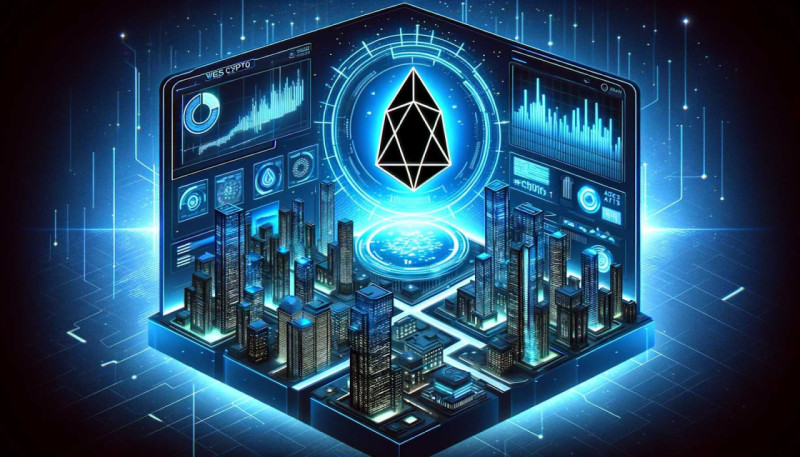
What Is Eos Crypto: Free Transactions
One of the distinguishing features of EOS is its approach to transaction fees. Unlike many other cryptocurrencies, EOS operates on a model that eliminates per-transaction fees for its users. This unique system has several implications for usability, scalability, and overall user experience.
How EOS Eliminates Transaction Fees
Resource Staking. Instead of charging fees for individual transactions, EOS requires users and developers to stake EOS tokens to access network resources such as bandwidth, CPU, and storage. This staking model allocates a proportional amount of network resources to each user based on the amount of EOS they have staked. As long as users maintain their stake, they can perform operations on the network without facing per-transaction fees.
Benefits of Eliminating Transaction Fees
- Predictable Costs. The absence of transaction fees makes the cost of using the EOS network predictable. Users and developers know upfront how much they need to stake to access the necessary resources, allowing for better budgeting and financial planning without worrying about fluctuating transaction fees that can be prevalent in other networks.
- Enhanced Usability. By removing the barrier of transaction fees, EOS makes it easier for users to interact with applications. Users are more likely to engage with dApps when they are not penalized for every transaction, leading to a more fluid and user-friendly experience.
- Scalability. Free transactions contribute to EOS's scalability. The fear of rising transaction fees under heavy network load, common in networks like Ethereum, is not a concern in EOS. This encourages more extensive use of the network, especially for applications requiring high transaction throughput.
- Greater Adoption. The elimination of transaction fees can lower the entry barrier for new users and small-scale developers, potentially leading to greater adoption of the EOS platform for a variety of applications.
Considerations in the Free Transaction Model
- Resource Allocation Limits. While there are no fees per transaction, the amount of transactions a user can perform is limited by their stake in EOS tokens. This means that while the system is free, it still requires investment in the form of staking, which might be a barrier for some.
- Potential for Resource Mismanagement. Since resources are obtained through staking rather than per-transaction payments, there's a risk that users might overutilize resources or that large stakeholders could dominate the allocation of network capacity.
EOS's approach to managing transaction fees represents a significant shift from traditional cryptocurrency models. It focuses on fostering a more accessible and scalable platform, ideally suited for businesses and developers looking to build and run decentralized applications without the limitations imposed by transaction costs. This system has played a critical role in EOS’s appeal and functionality as a blockchain platform.
Compared to Other Cryptocurrencies, What Is Eos Crypto
In the world of cryptocurrencies, various platforms have emerged, each offering unique features and benefits. Here, we will compare EOS with two of the most well-known cryptocurrencies: Ethereum and Bitcoin. The comparison will focus on aspects such as transaction speed, fees, scalability, and consensus mechanism.
Table: Comparison of EOS, Ethereum, and Bitcoin
| Feature | EOS | Ethereum | Bitcoin |
| Transaction Speed | 0.5 seconds per block | 10-15 seconds per block | 10 minutes per block |
| Fees | Zero fees for transactions | Variable, typically low | Variable, can be high |
| Scalability | Millions of transactions per second (TPS) potential | 30 TPS (current), 100,000+ TPS with upgrades | 7 TPS |
| Consensus Mechanism | Delegated Proof-of-Stake (DPoS) | Proof-of-Work (PoW), transitioning to Proof-of-Stake (PoS) | Proof-of-Work (PoW) |
Detailed Discussion
1. Transaction Speed
EOS:
EOS boasts a transaction speed of approximately 0.5 seconds per block. This rapid speed is due to its Delegated Proof-of-Stake (DPoS) consensus mechanism, which allows for faster confirmation times. The swift transaction speed makes EOS an attractive option for applications requiring real-time interactions and high throughput.
Ethereum:
Ethereum currently processes transactions with a block time of 10-15 seconds. While this is considerably faster than Bitcoin, it is slower than EOS. However, Ethereum's ongoing transition to Ethereum 2.0, which involves moving from Proof-of-Work (PoW) to Proof-of-Stake (PoS), is expected to improve its transaction speeds and overall performance.
Bitcoin:
Bitcoin has a block time of about 10 minutes, making it the slowest among the three. Its Proof-of-Work (PoW) consensus mechanism, while highly secure, contributes to these longer transaction times. This slow speed can be a drawback for use cases requiring quick transaction confirmations.
2. Fees
EOS:
One of EOS's standout features is its zero transaction fees. This is achieved through its unique resource allocation model, where users stake tokens to gain access to network resources such as CPU, bandwidth, and RAM. The absence of fees makes EOS particularly appealing for applications with a high volume of transactions.
Ethereum:
Ethereum's transaction fees, known as gas fees, can vary depending on network congestion. While typically low, these fees can become substantial during periods of high demand. The move to Ethereum 2.0 aims to address scalability issues, which should help stabilize and potentially reduce fees in the long term.
Bitcoin:
Bitcoin's transaction fees are also variable and can become quite high during times of network congestion. The PoW mechanism, coupled with the limited block size, often leads to bidding wars for transaction inclusion, driving up fees. This variability and potential for high costs can be a limiting factor for widespread use in everyday transactions.
3. Scalability
EOS:
EOS is designed with scalability in mind, theoretically supporting millions of transactions per second (TPS) through parallel processing and horizontal scaling. This makes it a strong candidate for high-throughput applications such as social networks, games, and decentralized exchanges.
Ethereum:
Currently, Ethereum can handle about 30 TPS, which is significantly lower than EOS. However, the planned upgrades in Ethereum 2.0 aim to improve scalability dramatically, potentially supporting over 100,000 TPS through the implementation of shard chains and other technological advancements.
Bitcoin:
Bitcoin's scalability is limited, handling only about 7 TPS. This limitation is primarily due to its PoW consensus mechanism and 1 MB block size. Solutions like the Lightning Network are being developed to enhance Bitcoin's scalability by enabling off-chain transactions, but it remains less scalable than both EOS and Ethereum.
4. Consensus Mechanism
EOS:
EOS uses a Delegated Proof-of-Stake (DPoS) consensus mechanism. In DPoS, token holders vote to elect a limited number of block producers who are responsible for validating transactions and creating new blocks. This approach allows for faster block creation and higher scalability but has been criticized for potential centralization, as power is concentrated among a few block producers.
Ethereum:
Ethereum is in the process of transitioning from Proof-of-Work (PoW) to Proof-of-Stake (PoS) with Ethereum 2.0. PoW, the current mechanism, is secure but energy-intensive and slow. PoS, on the other hand, promises to be more energy-efficient, faster, and scalable, as it allows validators to create new blocks based on the number of tokens they hold and are willing to "stake" as collateral.
Bitcoin:
Bitcoin's Proof-of-Work (PoW) consensus mechanism is known for its high security and decentralization. However, it is energy-intensive and slow, leading to long transaction times and high fees during peak usage. PoW's robust security makes Bitcoin an excellent store of value but less ideal for everyday transactions compared to EOS and Ethereum.
EOS, Ethereum, and Bitcoin each have unique strengths and weaknesses. EOS stands out with its fast transaction speeds, zero fees, and high scalability, making it suitable for applications requiring high throughput and low latency. However, its DPoS mechanism may raise concerns about centralization. Ethereum, with its ongoing transition to Ethereum 2.0, aims to combine improved scalability and speed with a more sustainable and decentralized PoS consensus. Bitcoin, while the most secure and decentralized, faces challenges with speed, fees, and scalability but remains a trusted store of value.
Choosing the right platform depends on the specific use case and the importance of factors such as speed, cost, scalability, and decentralization.
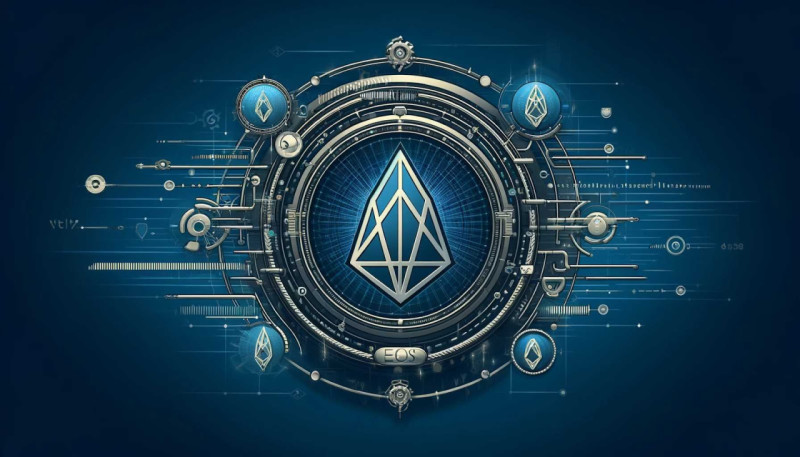
Practical Applications of What Is Eos Crypto
EOS has become a popular platform for building decentralized applications (dApps) due to its high transaction speed, scalability, and zero transaction fees. Here are some notable examples of dApps that have been built on the EOS platform, showcasing the diversity and potential of EOS-based applications.
Examples of Decentralized Applications (dApps) Built on EOS
EOS Knights
Description:
- EOS Knights is a mobile game and one of the first RPGs built on the EOS blockchain. Players collect and upgrade knights, pets, and materials to fight enemies and complete quests.
Features:
- In-game assets are represented as NFTs (non-fungible tokens) and can be traded on the marketplace.
- The game utilizes the EOS blockchain to ensure transparency and ownership of digital assets.
- Real-time interactions and transactions enabled by EOS's fast and fee-less transactions.
Everipedia
Description:
- Everipedia is a decentralized knowledge base and encyclopedia aiming to provide a more inclusive and democratic platform compared to traditional encyclopedias like Wikipedia.
Features:
- Content creation and editing are incentivized through IQ tokens, which are native to the Everipedia network.
- Governance and content approval are managed through a decentralized system, reducing the risk of censorship and bias.
- The platform leverages EOS's scalability to handle a large volume of user-generated content efficiently.
Prospectors
Description:
- Prospectors is a multiplayer online real-time strategy (MMORTS) game set in a 19th-century Gold Rush environment. Players mine gold, trade resources, and develop land.
Features:
- The game's economy is entirely blockchain-based, with all resources and assets existing as tokens on the EOS network.
- Players can trade resources and services with others, creating a complex, player-driven economy.
- EOS's fast transaction speeds and zero fees enable smooth gameplay and frequent transactions.
Chintai
Description:
- Chintai is a decentralized leasing platform that allows users to lease their digital assets, such as EOS tokens and CPU/NET resources, to others for a fee.
Features:
- Users can earn passive income by leasing out their unused resources.
- The platform provides an automated and trustless leasing process through smart contracts on the EOS blockchain.
- EOS's scalability ensures the platform can handle a high volume of leasing transactions efficiently.
Karbon14
Description:
- Karbon14 is a decentralized platform for creating and verifying digital birth certificates. It aims to provide a secure and immutable way to record and access birth data.
Features:
- Birth certificates are stored on the EOS blockchain, ensuring they are tamper-proof and accessible globally.
- The platform enhances privacy and security through the use of blockchain technology.
- It leverages EOS's fast transactions and zero fees to make the process of creating and accessing birth certificates efficient and cost-effective.
Scatter
Description:
- Scatter is a versatile wallet and identity management tool that supports multiple blockchains, including EOS. It provides users with a secure way to manage their digital assets and interact with dApps.
Features:
- Scatter offers a seamless interface for managing EOS tokens and other cryptocurrencies.
- It includes robust security features such as hardware wallet integration and multi-signature support.
- The platform supports easy interaction with a wide range of dApps, making it a crucial tool for the EOS ecosystem.
The EOS platform has demonstrated its potential through a variety of practical applications spanning different industries, from gaming and knowledge sharing to resource leasing and identity management. The high transaction speeds, scalability, and zero transaction fees provided by EOS make it an attractive choice for developers looking to build efficient and user-friendly dApps. As the ecosystem continues to grow, we can expect to see even more innovative and impactful applications emerging on the EOS blockchain.
Major Partnerships and Industry Sectors Adopting of What Is Eos Crypto
EOS has attracted significant attention from various industries and formed key partnerships to drive adoption and innovation. Here, we explore some notable partnerships and the industry sectors that have embraced EOS, highlighting how the platform is being utilized to create value and solve specific challenges.
Major Partnerships
Block.one and Google Cloud
In 2020, Block.one, the company behind EOSIO (the software underlying EOS), partnered with Google Cloud. Google Cloud became a block producer candidate, aiming to improve the security, scalability, and reliability of the EOS network. This partnership increased visibility and credibility for EOS, leveraging Google Cloud’s infrastructure to enhance the performance and security of EOSIO-based applications.
Galaxy Digital
Block.one also partnered with Galaxy Digital, a leading digital assets merchant bank, to launch the Galaxy EOS VC Fund. This fund supports the development of the EOS ecosystem by investing in projects and startups building on EOSIO. By providing financial backing and resources, this partnership has fostered innovation and growth within the EOS community.
Mythical Games
Mythical Games, a game technology company, collaborated with EOS to develop blockchain-based games. Their flagship game, “Blankos Block Party,” uses EOSIO to manage digital ownership and in-game assets. This partnership demonstrated the potential of EOS in the gaming industry, showing how blockchain technology can enhance gameplay and offer true ownership of digital assets.
Industry Sectors Adopting EOS
Gaming
The gaming industry has been one of the most enthusiastic adopters of EOS, leveraging its high transaction speed and zero fees to create seamless and engaging experiences. Examples include "Blankos Block Party," an open-world multiplayer game where players can create, own, and trade digital assets, and "EOS Knights," an RPG utilizing EOS for real-time interactions and asset trading. EOS enables game developers to create decentralized economies within games, providing players with greater control over their digital assets.
Finance and DeFi
The finance sector, particularly decentralized finance (DeFi), has adopted EOS for its scalability and efficiency, enabling the creation of complex financial applications. Platforms like Chintai, which allows users to lease digital assets and resources, and EOSFinex, a decentralized exchange offering high-speed trading and reduced transaction costs, exemplify EOS's impact. EOS supports the development of scalable DeFi applications, promoting financial inclusion and innovation.
Social Media and Content Platforms
Social media and content platforms have also embraced EOS to provide decentralized alternatives to traditional models, focusing on user empowerment and content monetization. Voice, a social media platform developed by Block.one, rewards content creators and ensures transparency, while Everipedia, a decentralized encyclopedia, incentivizes content creation through blockchain technology. These platforms leverage EOS to create fair and transparent ecosystems where users control their data and monetize their contributions.
Supply Chain and Logistics
The supply chain and logistics sector has explored EOS for its potential to enhance transparency, traceability, and efficiency in managing goods and services. Platforms like Worbli, which provides financial services and solutions including supply chain management tools built on EOSIO, exemplify its use. EOS’s ability to handle large transaction volumes quickly and securely makes it ideal for supply chain applications, improving traceability and reducing fraud.
Healthcare
The healthcare industry has shown interest in EOS for secure and efficient data management, enabling better patient care and data interoperability. Platforms like Patientory use EOSIO to secure patient data and facilitate efficient data sharing. EOS’s secure and scalable infrastructure supports healthcare applications that enhance data security, patient privacy, and interoperability across systems.
EOS has established itself as a versatile blockchain platform with wide-ranging applications across various industries. Key partnerships with major players like Google Cloud and Galaxy Digital have bolstered its credibility and supported its ecosystem's growth. From gaming and finance to social media, supply chain, and healthcare, EOS is driving innovation and providing scalable, efficient solutions tailored to the needs of diverse sectors. As adoption continues to grow, EOS is poised to play a significant role in the future of decentralized applications.
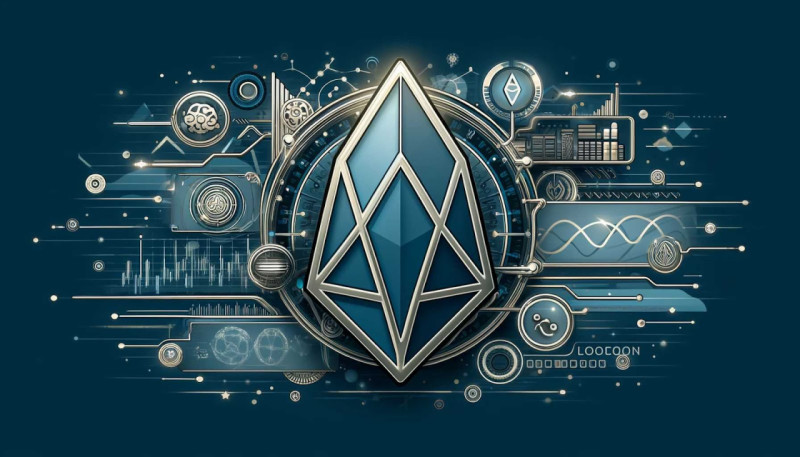
Unique Use Cases Facilitated by EOS’s Architecture
EOS's architecture offers several unique features, such as high transaction speeds, zero transaction fees, and scalable infrastructure. These attributes enable various innovative and unique use cases across different sectors. Here are some of the distinctive use cases facilitated by EOS’s architecture:
1. Decentralized Autonomous Organizations (DAOs)
EOS's flexible governance model and high transaction throughput make it an ideal platform for creating and managing Decentralized Autonomous Organizations (DAOs). DAOs can operate without a central authority, relying on smart contracts to enforce rules and execute decisions based on member votes. The zero transaction fees and rapid transaction speeds enhance the efficiency and scalability of DAOs on EOS.
2. Real-Time Supply Chain Management
EOS's ability to handle a high volume of transactions quickly and securely makes it suitable for real-time supply chain management. Businesses can use EOS to track goods through the supply chain, ensuring transparency and traceability. Each transaction, from manufacturing to delivery, can be recorded on the blockchain, providing a tamper-proof and real-time view of the supply chain.
3. High-Frequency Trading Platforms
The financial sector can benefit significantly from EOS's high transaction speeds and zero fees. High-frequency trading platforms can leverage EOS to execute trades in real-time without incurring transaction costs. This capability is crucial for trading strategies that rely on making a large number of trades in a short period, maximizing profitability without being hindered by fees or latency.
4. Decentralized Identity Verification
EOS can facilitate decentralized identity verification systems, where individuals have control over their digital identities. Using EOS's blockchain, identity attributes can be securely stored and verified without a central authority. This system ensures privacy and security, as individuals can selectively share their identity information with service providers, reducing the risk of identity theft.
5. Microtransactions and Content Monetization
Content creators can leverage EOS’s zero-fee transactions to implement microtransactions for monetizing digital content. Platforms can enable users to make small payments for content such as articles, videos, or music without worrying about transaction fees eroding their profits. This use case opens up new revenue streams for creators and ensures fair compensation for their work.
6. Decentralized Gaming Economies
EOS's architecture supports complex and scalable gaming ecosystems. Games built on EOS can create decentralized economies where in-game assets are tokenized and traded on the blockchain. Players can own, buy, sell, and trade digital assets, creating a real-world economy within the game. The zero transaction fees and fast processing ensure a smooth gaming experience with real-time asset management.
7. Tokenized Real Estate
The real estate industry can utilize EOS to tokenize properties, enabling fractional ownership and easier transfer of real estate assets. Each property can be divided into tokens representing shares of ownership, which can be bought, sold, or traded on the blockchain. EOS’s transparency and security features ensure that property transactions are reliable and verifiable.
8. Healthcare Data Management
EOS’s secure and scalable infrastructure can transform healthcare data management. Patient records can be stored on the blockchain, ensuring data integrity and privacy. Patients can control access to their health data, sharing it with healthcare providers as needed. This decentralized approach improves data security, reduces administrative costs, and enhances patient care.
9. Decentralized Prediction Markets
Prediction markets can thrive on EOS due to its high transaction throughput and zero fees. Users can create and participate in markets where they bet on the outcome of future events. The transparency and security of EOS ensure that market data and transactions are tamper-proof, providing a fair and reliable platform for participants.
EOS's unique architecture, characterized by high transaction speeds, zero transaction fees, and scalable infrastructure, enables a wide array of innovative use cases across various industries. From decentralized organizations and real-time supply chain management to microtransactions and tokenized real estate, EOS provides the tools and capabilities needed to build next-generation decentralized applications that can transform traditional systems and processes.
What Is Eos Crypto: Challenges and Criticisms
While EOS has garnered significant attention and adoption due to its innovative features, it has also faced various challenges and criticisms. These issues range from governance concerns to allegations of centralization, affecting the platform’s reputation and its community's trust. Here, we discuss some of the major controversies and challenges EOS has encountered.
Governance Issues
Centralized Governance Model
One of the primary criticisms of EOS is its governance model. EOS uses a Delegated Proof-of-Stake (DPoS) mechanism, where 21 block producers are elected by EOS token holders to validate transactions and maintain the network. Critics argue that this model can lead to centralization of power, as the influence is concentrated in the hands of a few block producers. This centralization can potentially lead to collusion and governance manipulation, undermining the decentralization ethos of blockchain technology.
Voting Manipulation
The voting process for electing block producers has also been criticized. There have been allegations of vote-buying and other manipulative practices that distort the fairness of the election process. This manipulation can result in the selection of block producers who are more interested in their own gains rather than the overall health and security of the EOS network.
Centralization Concerns
Concentration of Wealth
A significant portion of EOS tokens is held by a small number of wallets, raising concerns about the centralization of economic power within the network. This concentration can lead to disproportionate influence over network decisions and governance, as major token holders can effectively control the election of block producers and other key aspects of the ecosystem.
Geographical Concentration of Block Producers
There have been concerns about the geographical concentration of block producers, particularly in regions like China. This concentration can lead to vulnerabilities, such as potential regulatory actions by local governments affecting a significant portion of the network’s operations.
Technical and Security Challenges
Scalability vs. Decentralization Trade-offs
While EOS boasts high transaction speeds and scalability, these benefits come with trade-offs in terms of decentralization. The DPoS mechanism, while efficient, sacrifices some degree of decentralization to achieve faster transaction processing. This trade-off has sparked debates within the blockchain community about the balance between scalability and true decentralization.
Security Breaches and Vulnerabilities
EOS has experienced its share of security challenges, including bugs and vulnerabilities in its smart contract platform. In 2019, a vulnerability was discovered that could potentially allow an attacker to steal resources from other users. Although the issue was promptly addressed, it highlighted the need for robust security measures and continuous monitoring to safeguard the network.
Economic and Ecosystem Challenges
Inflation and Resource Allocation
The EOS network has an inflation mechanism where new tokens are generated to reward block producers. Some community members have criticized this model, arguing that it can lead to excessive inflation and devalue the tokens held by users. Additionally, the resource allocation model, where users stake tokens to gain access to network resources, has been viewed as complex and confusing for new users, potentially hindering broader adoption.
Development and Community Engagement
Maintaining active development and engaging the community is crucial for any blockchain project. EOS has faced criticism regarding the perceived slow pace of development and the effectiveness of community engagement initiatives. Ensuring continuous improvement of the platform and fostering a vibrant community are essential for the long-term success of EOS.
EOS has made significant strides in the blockchain space, offering innovative features such as high transaction speeds and zero fees. However, the platform has also faced substantial challenges and criticisms. Issues related to governance, centralization, security, and economic models have sparked debates within the community and the broader blockchain industry. Addressing these challenges transparently and effectively is crucial for EOS to maintain its position as a leading blockchain platform and to build trust with its users and developers. As EOS continues to evolve, it will need to balance its technical advantages with the foundational principles of decentralization and security to achieve sustainable growth and adoption.
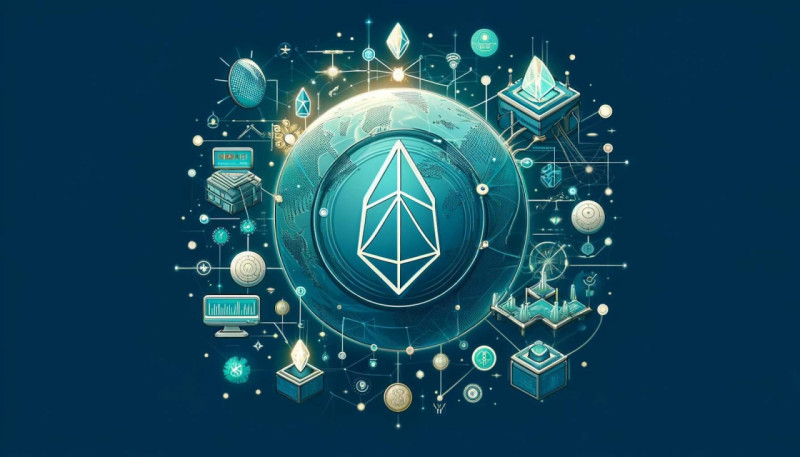
What Is Eos Crypto: Operational Mechanisms and Market Performance
EOS has faced several criticisms concerning its operational mechanisms and market performance. These issues have impacted its reputation and raised questions about the long-term viability of the platform. Here, we address some of the major criticisms in these areas and discuss how they have affected EOS.
Operational Mechanisms
1. Delegated Proof-of-Stake (DPoS) Centralization Concerns
Criticism:
The DPoS consensus mechanism, while enabling high transaction speeds and scalability, has been criticized for potentially leading to centralization. In DPoS, a limited number of block producers (21) are elected by token holders to validate transactions. This concentration of power can result in a few entities having disproportionate control over the network.
Response:
EOS proponents argue that DPoS strikes a necessary balance between decentralization and efficiency. They highlight that the election process is democratic, with token holders having the power to vote out block producers who do not act in the network's best interests. Additionally, efforts are being made to increase transparency and accountability among block producers.
2. Voting Manipulation and Collusion
Criticism:
There have been allegations of vote-buying and collusion among block producers, which undermines the integrity of the election process. Such practices can lead to a lack of trust in the network’s governance.
Response:
To combat vote manipulation, EOS has introduced measures to enhance transparency in voting processes. Community initiatives and third-party audits are being encouraged to monitor block producer behavior. Continuous improvements to the governance model aim to reduce the potential for collusion and ensure fair elections.
3. Inflation and Resource Allocation Model
Criticism:
The inflationary model of EOS, where new tokens are created to reward block producers, has been criticized for potentially devaluing the currency. Additionally, the resource allocation system, which requires users to stake tokens to access network resources, is seen as complex and confusing.
Response:
The inflation mechanism is intended to incentivize block producers and maintain network security. However, there is ongoing discussion within the community about optimizing inflation rates. To address the complexity of the resource allocation model, EOS has been working on user-friendly interfaces and educational resources to help users better understand and manage their staked resources.
Market Performance
1. Price Volatility
Criticism:
EOS, like many cryptocurrencies, has experienced significant price volatility. This volatility can deter potential investors and users, making it challenging to predict the platform's long-term viability.
Response:
Price volatility is a common issue across the entire cryptocurrency market, not unique to EOS. The EOS community and Block.one, the company behind EOSIO, continue to focus on developing robust applications and partnerships that can drive real-world use cases and adoption, which in turn could help stabilize the token's market performance.
2. Competition from Other Blockchains
Criticism:
EOS faces stiff competition from other blockchain platforms such as Ethereum, Binance Smart Chain, and newer entrants like Solana and Polkadot. These platforms also offer high transaction speeds and low fees, challenging EOS's market position.
Response:
EOS differentiates itself with its zero transaction fees and the unique DPoS consensus mechanism. The ongoing development of the EOSIO software aims to introduce new features and improvements that can enhance its competitiveness. Strategic partnerships, such as those with Google Cloud and Galaxy Digital, also help bolster EOS’s market position by providing additional resources and credibility.
3. Perception of Development Stagnation
Criticism:
There has been a perception that development on the EOS platform has stagnated, with fewer significant updates and innovations compared to other blockchain platforms.
Response:
Block.one and the EOS community have been actively working to dispel this perception by releasing updates and new features for EOSIO. The launch of initiatives like the EOSIO 2.1 upgrade, which includes performance improvements and developer tools, demonstrates the ongoing commitment to the platform’s evolution. Community engagement and development grants also aim to stimulate innovation and attract new developers to the ecosystem.
EOS has faced several criticisms related to its operational mechanisms and market performance. Issues such as centralization concerns, voting manipulation, inflation, and price volatility have been points of contention. However, the EOS community and Block.one have been proactive in addressing these challenges through various measures, including governance reforms, transparency initiatives, and continuous development efforts. By tackling these issues head-on, EOS aims to strengthen its position in the blockchain space and ensure long-term sustainability and growth.
Future of What Is Eos Crypto
The future of EOS includes a series of planned updates and initiatives aimed at improving the platform’s scalability, usability, and overall functionality. These efforts are designed to address current challenges and position EOS as a leading blockchain platform for decentralized applications (dApps). Below, we discuss some of the key upcoming updates and roadmap highlights for EOS.
What Is Eos Crypto: Upcoming Updates and Roadmap Highlights
EOSIO 3.0
One of the most anticipated updates is EOSIO 3.0, which aims to bring significant improvements to the underlying software of the EOS blockchain. This update focuses on enhancing performance, security, and the developer experience. EOSIO 3.0 includes enhancements for better scalability, supporting higher transaction throughput to handle large-scale applications more efficiently. Improved security features include more robust smart contract auditing tools and better protection against common vulnerabilities. Additionally, new and improved tools for developers will streamline the development process, making it easier to build, test, and deploy dApps on EOS.
Inter-Blockchain Communication (IBC)
Inter-Blockchain Communication (IBC) is another crucial development for EOS. IBC enables different blockchain networks to communicate and interact with each other. This advancement allows for cross-chain transactions, letting users conduct transactions seamlessly across multiple blockchains. Asset transfers will be possible across different blockchains, increasing liquidity and creating new opportunities for decentralized finance (DeFi) applications. IBC also fosters a more collaborative and interconnected blockchain ecosystem, where dApps on EOS can leverage resources and functionalities from other blockchains.
EOS PowerUp Model
The EOS PowerUp Model is designed to replace the current resource allocation model, addressing some of the complexities and inefficiencies users face. This new model simplifies resource management by allowing users to power up their accounts to receive CPU and NET bandwidth for a 24-hour period. The PowerUp Model aims to reduce the costs associated with using the EOS network by optimizing resource allocation. A more straightforward and predictable resource management system improves the overall user experience, making EOS more accessible to new users.
EOSIO+ Coalition
The EOSIO+ Coalition is a collaboration between various EOSIO-based blockchains and communities to drive the development and adoption of the EOSIO software. The coalition focuses on pooling resources and expertise to accelerate the development of new features and improvements for EOSIO. By creating a more unified and cohesive ecosystem, the coalition benefits all EOSIO-based platforms and their users. This joint initiative fosters innovation through projects that push the boundaries of what’s possible with EOSIO technology.
Focus on DeFi and NFT Markets
EOS is placing a strong emphasis on expanding its presence in the decentralized finance (DeFi) and non-fungible token (NFT) markets. The development and support of DeFi protocols leverage EOS's high transaction speeds and zero fees to offer competitive financial services. Encouraging the creation of NFT platforms and marketplaces on EOS capitalizes on the growing popularity of digital collectibles and unique digital assets. Forming strategic partnerships and integrations with existing DeFi and NFT projects enhances the functionality and reach of the EOS ecosystem.
The future of EOS looks promising with several key updates and initiatives on the horizon aimed at addressing existing challenges and expanding the platform’s capabilities. The launch of EOSIO 3.0, Inter-Blockchain Communication, the PowerUp Model, and the EOSIO+ Coalition will significantly enhance the performance, security, and usability of the EOS network. Additionally, the strong focus on DeFi and NFT markets underscores EOS's commitment to remaining at the forefront of blockchain innovation. These developments are expected to drive greater adoption and solidify EOS's position as a leading platform for decentralized applications.

What Is Eos Crypto: Growth Potential and Long-Term Viability
Analysts and industry experts have diverse views on the growth potential and long-term viability of EOS. While some are optimistic about its innovative features and strong community support, others are concerned about governance issues and competition from other blockchain platforms. Here, we summarize a range of analyst opinions to provide a balanced perspective on EOS's future.
Positive Perspectives
Innovative Technology and Scalability
Many analysts highlight EOS's technological innovations, particularly its Delegated Proof-of-Stake (DPoS) consensus mechanism, which allows for high transaction speeds and scalability. These features make EOS a strong candidate for applications requiring high throughput, such as decentralized finance (DeFi) platforms and gaming applications. The absence of transaction fees is also seen as a major advantage, potentially attracting a larger user base.
Strong Developer Community and Ecosystem Support
EOS has a vibrant developer community and substantial support from Block.one, the company behind EOSIO. This backing includes financial resources and strategic partnerships that drive ecosystem growth. Initiatives like the EOSIO+ Coalition, which aims to unify and strengthen EOSIO-based blockchains, are viewed positively as they promote collaboration and innovation.
Expanding into DeFi and NFTs
Analysts are optimistic about EOS's expansion into the DeFi and NFT markets. The platform’s high transaction speeds and zero fees are ideal for DeFi applications, where quick and cost-effective transactions are crucial. The growing interest in NFTs also presents a significant opportunity for EOS, as it can facilitate the creation and trading of digital collectibles and assets.
Concerns and Challenges
Governance and Centralization Issues
One of the main concerns among analysts is the governance model of EOS, particularly the potential for centralization within the DPoS system. The concentration of power among a few block producers and allegations of vote-buying and collusion undermine the decentralized ethos of blockchain technology. These issues can affect the trust and credibility of the network, potentially deterring users and developers.
Competition from Other Blockchains
EOS faces stiff competition from other blockchain platforms like Ethereum, Binance Smart Chain, Solana, and Polkadot. These platforms also offer high transaction speeds and low fees, challenging EOS’s market position. Ethereum’s transition to Ethereum 2.0, which promises enhanced scalability and lower costs, is particularly significant as it addresses many of the same issues EOS aims to solve.
Market Performance and Adoption
The price volatility of EOS and the perception of slow development have been points of concern. Analysts note that while EOS has a solid technological foundation, it needs to demonstrate continuous innovation and significant adoption to compete effectively. The platform’s ability to attract and retain developers, users, and institutional partners will be crucial for its long-term viability.
Balanced View
Strategic Partnerships and Continuous Development
Despite the challenges, EOS's strategic partnerships and continuous development efforts are positive indicators for its future. Collaborations with major industry players, such as Google Cloud and Galaxy Digital, provide credibility and resources to support growth. Ongoing updates, such as the transition to EOSIO 3.0 and the implementation of the PowerUp Model, address existing issues and enhance the platform's capabilities.
Potential for Niche Dominance
Some analysts believe that while EOS may not surpass giants like Ethereum in terms of overall market dominance, it has the potential to dominate specific niches. Its strengths in high-frequency trading, real-time supply chain management, and decentralized gaming make it a strong contender in these areas. By focusing on its unique advantages, EOS can carve out a significant and sustainable market presence.
Analysts have mixed opinions on the growth potential and long-term viability of EOS. While its innovative technology, strong community support, and strategic focus on DeFi and NFTs are seen as major strengths, concerns about governance, centralization, and competition remain. The platform’s ability to address these challenges and demonstrate continuous innovation will be key to its success. Overall, EOS has significant potential, but its long-term viability will depend on how effectively it navigates the complex and competitive blockchain landscape.
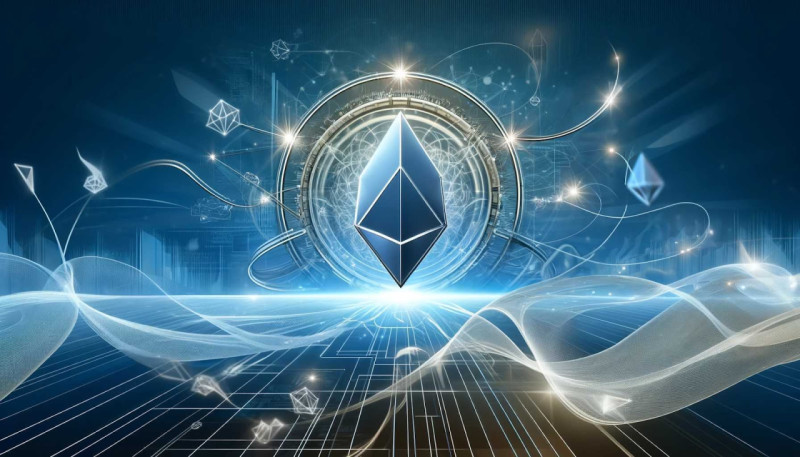
Conclusion: What Is Eos Crypto
EOS is a significant blockchain platform known for its high transaction speeds, zero transaction fees, and scalability, enabled by its Delegated Proof-of-Stake (DPoS) consensus mechanism. Throughout our exploration, we have covered various aspects of EOS, including its comparison with other cryptocurrencies, practical applications, major partnerships, unique use cases, challenges and criticisms, future roadmap, and analyst opinions.
EOS offers faster transaction speeds and zero fees compared to Ethereum and Bitcoin. However, it faces criticism for potential centralization in its governance model. The platform supports a wide range of decentralized applications (dApps), including gaming, social media, finance, and supply chain management, demonstrating its versatility. Collaborations with entities like Google Cloud and Galaxy Digital enhance EOS's infrastructure, credibility, and ecosystem growth. Additionally, EOS enables decentralized autonomous organizations (DAOs), real-time supply chain management, high-frequency trading platforms, and more, leveraging its technical strengths.
Despite its advantages, EOS faces significant challenges. Governance issues, centralization concerns, security challenges, and market performance volatility are notable hurdles. The upcoming updates, such as EOSIO 3.0, Inter-Blockchain Communication (IBC), and the PowerUp Model, aim to address these challenges and expand the platform's capabilities. Analyst opinions on EOS are mixed. While some highlight its innovative potential, others point out critical challenges, such as competition from other blockchains and governance issues.
EOS has the potential to remain a significant player in the evolving crypto landscape due to its unique combination of speed, scalability, and cost-effectiveness. Its focus on improving governance and security, along with strategic expansions into DeFi and NFT markets, positions it well for future growth. Continuous development and strategic partnerships further enhance its prospects.
For those interested in investing or participating in the EOS ecosystem, it is essential to stay informed about the latest updates and developments within the ecosystem. Understanding the risks related to governance and centralization issues is crucial, as these factors might impact the platform's stability and long-term success. Exploring the various applications and dApps built on EOS can help identify projects that align with individual interests and assess their potential for growth and adoption. Diversifying investments across multiple blockchain platforms can mitigate risks associated with any single platform. Engaging with the EOS community by participating in forums, attending webinars, and connecting with developers and other users can provide valuable insights and help stay ahead of trends.
EOS has demonstrated considerable potential through its technological innovations and diverse applications. While it faces notable challenges, ongoing improvements and strategic initiatives aim to solidify its position in the blockchain space. By staying informed, understanding the risks, exploring use cases, diversifying investments, and engaging with the community, investors and participants can make informed decisions and potentially benefit from the growth of the EOS ecosystem.
















